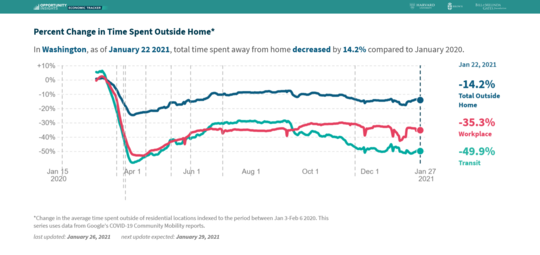 Beyond public health measures, the pandemic is changing consumer choices and behaviors, further challenging our economic recovery. Hidden impacts fueling uneven economic recovery As we've seen throughout this historic economic downturn, some industries and communities continue to experience the impact of the pandemic very differently. Some impacts are clear as public health measures have required prolonged closures or curtailment of restaurants, bars, gyms and gathering places. Others are less obvious, but no less challenging. As we learn, work and spend more time at home, businesses that remain open and fully operational are also struggling. Consumer behavior has significantly changed, out of necessity and choice. We're not driving, ride-sharing or taking public transportation as much. Significant numbers of people continue working from home meaning fewer stops to coffee shops, lunch spots and dry-cleaners. Even where it is possible to continue to patronize restaurants, retailers, salons and other establishments, some no longer have the financial means to do so, while others will choose to limit activities until they feel safer. Our Economic Recovery Dashboard shows a more than 14% decrease statewide in time spent out of the home during the day. This is up from the 25% drop following the initial lockdown last March, but still significantly lower than normal. The trickle down impact of that lost activity is real, and the possibility of a "K-shaped" recovery in which some industries and communities are left behind will have long-term consequences for all of us.  |
No comments:
Post a Comment